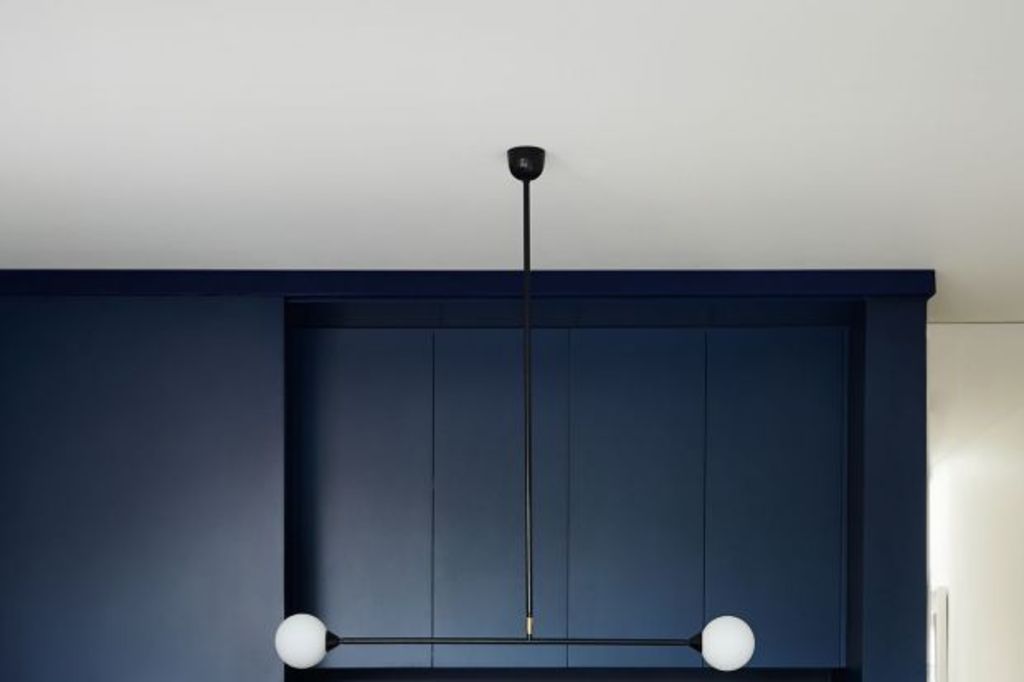How to paint like a pro: Experts share their top tips for getting it right

Painting a wall might sound easy, but if you want a beautiful and professional finish then roll up your sleeves and prepare for some hard work.
Follow these seven essential steps to get you painting like an expert in no time.
Choose your paint type
There are many choices when it comes to picking a paint type and there are no hard rules about what to use where. Kitchens, bathrooms and high use areas will benefit from a tough paint that’s easy to clean, whereas low-sheen or matt paint is a popular choice for most other walls and ceilings.
Select a colour
Browse Pinterest and home decor magazines for inspiration, then buy a sample pot to trial at home. Make a point to see how it looks during the day and at night.
Neutral paint is good if you’re not sure what colour to choose, but as interior and property stylist Louise Hatcher points out, rooms don’t always have to be light and bright.
“For too long we have been afraid of creating dark, moody rooms, but there is nothing wrong with a bit of mood, especially in the bedroom. Current trends include using dark colours on the walls and matching your woodwork to your wall colour instead of using white highlights.”
- Related: Should you renovate before you sell
- Related: Choosing the right colours for your home
- Related: A guide to paint brushes
Invest in the best tools for the job
You’ll need to purchase a number of items before you begin, and as painting expert Jenny Stapleton from Priority One Coatings in Sydney says, “you are only as good as the equipment you’re using”, so don’t go for the cheapest items on the shelf.
Stock up on: sandpaper, sugar soap, masking tape, a scraper, crack sealant, drop sheets, old clothes, a step ladder, a variety of brushes, a roller with extendable pole, paint trays, undercoat and enough paint to finish the job.
Prepare and clean your surface
Start by removing all wall hooks, nails, light switch covers or light fittings. For protection, cover the floor with drop sheets. Stapleton advises purchasing canvas sheets over plastic “as they last much longer and are a bit more user friendly”.
If you need to remove old wallpaper, scrape it off by hand or hire in a steamer. For previously painted walls or new plasterboard, use sugar soap to get rid of dirt and dust, and remove mould with a household bleach solution. Allow the surface to completely dry before going any further.
Scraping and sanding
Remove lumps of old paint, wallpaper backing or plaster with a scraper and use sealant to fill in any nail holes or obvious cracks. Sand it all back once dry, then tape up any skirting board, window frames or doors with a quality painters’ masking tape for protection.
Always ensure your room is well ventilated and wear a mask to guard against chemicals and dust.
Do the brushwork
Start by applying your undercoat or primer then, once dry, move onto your chosen colour. Always give paint a good stir before dipping in your brush and carefully remove any excess by wiping it on the edge of the tin to prevent drips.
Begin painting up high and “cut in” on corners, along edges and around any tricky details such as taped-up light switches. If you are standing on a step ladder, bring a smaller paint pot with you instead of precariously trying to balance a heavy tin.
Get rolling
Rollers are not always necessary but as Stapleton says, “they will save you a lot of time and get the job done much faster”. For the best results, fill your paint tray and lightly dip your roller in before tapping off any excess and rolling it in the tray for even coverage.
Roll paint onto the surface in long, firm strokes until the undercoat is completely covered with no visible track marks. Wait two hours before applying the second top coat.
If you are happy that a second coat is enough, remove the masking tape quickly and gently while the paint is still fresh, then stand back and admire your hard work.
We recommend
We thought you might like
States
Capital Cities
Capital Cities - Rentals
Popular Areas
Allhomes
More







